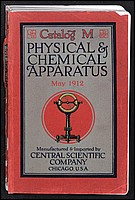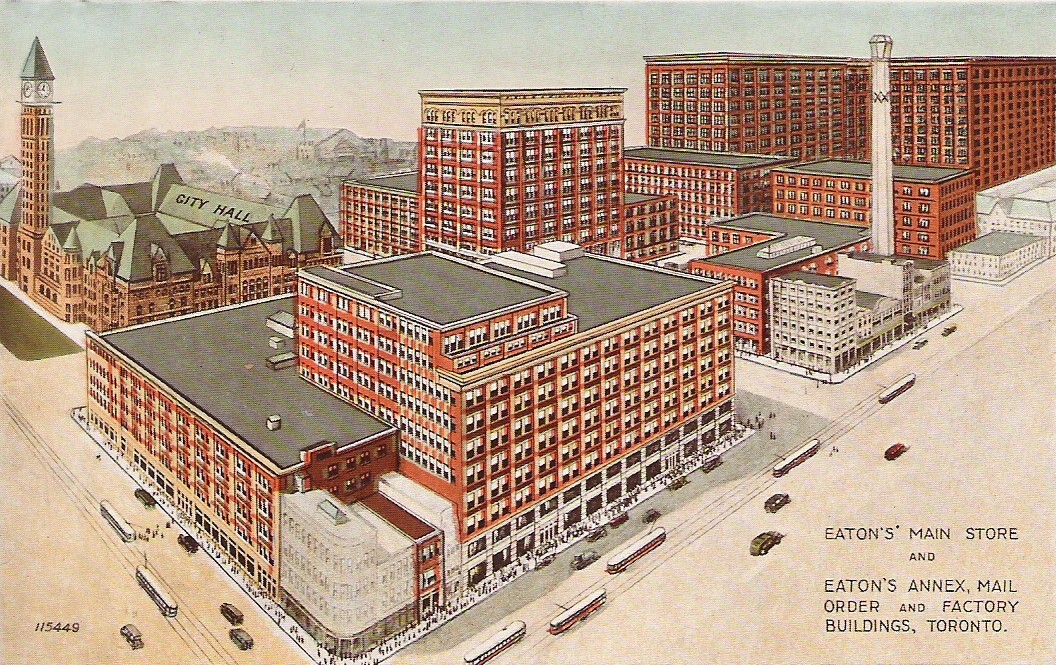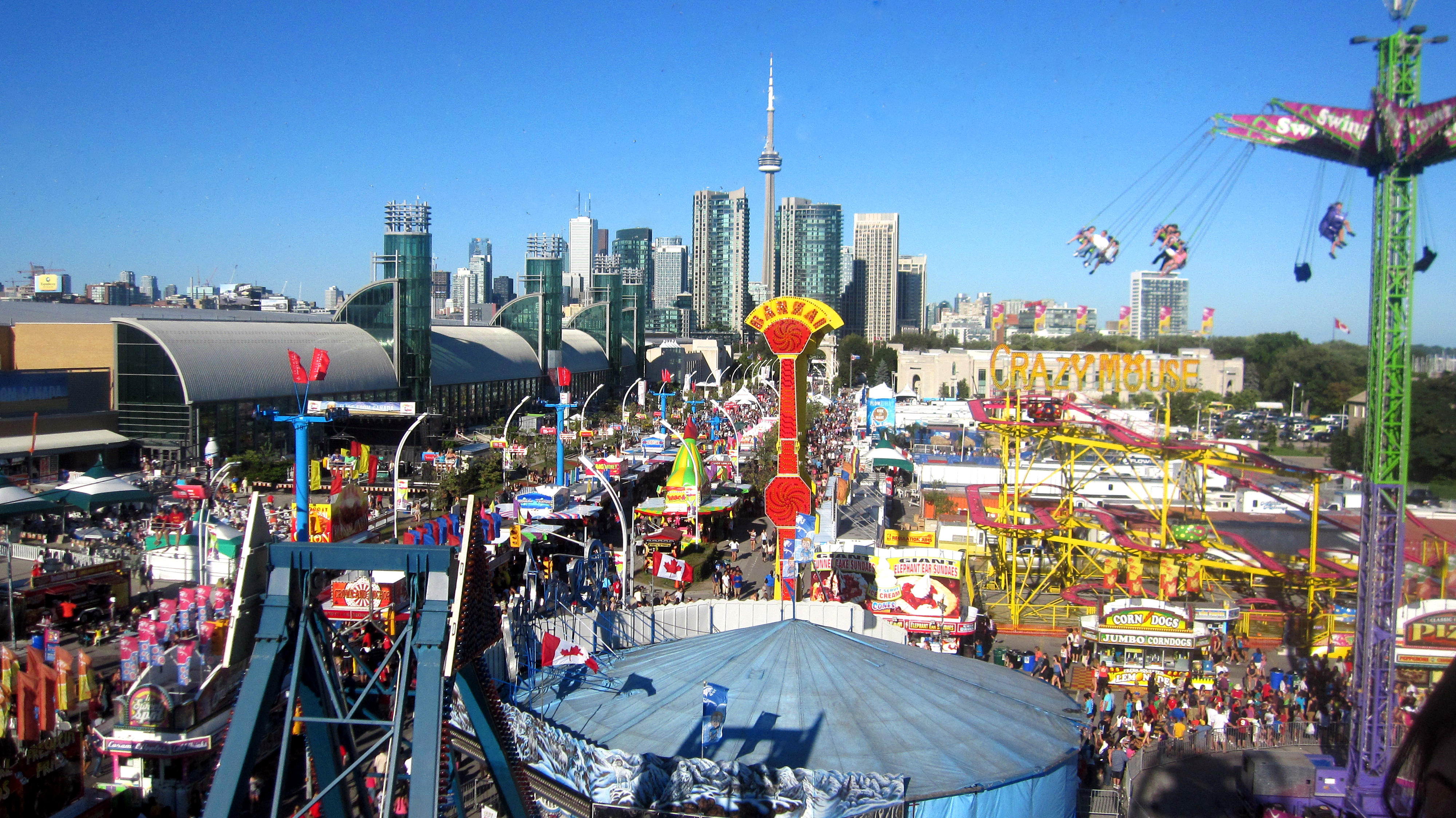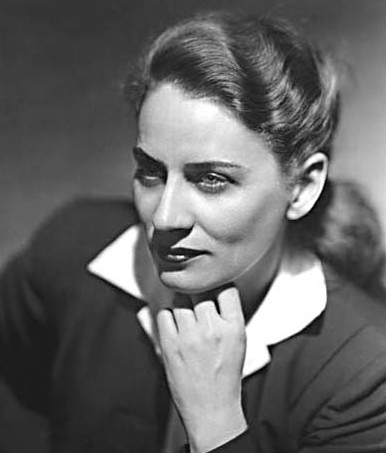|
Eaton's Catalogue
The Eaton's catalogue was a mail-order catalogue published by Eaton's from 1884 to 1976. It was "one of the first to be distributed by a Canadian retail store". The first version of the catalogue was a 32-page booklet handed out at the Industrial Exhibition (now the Canadian National Exhibition). Within twelve years, the company's mail-order department was filling over 200,000 orders per year. Eaton's actively sought out new subscribers, particularly in rural areas, by employing such tactics as offering gifts for the contact information of non-subscribers. There was initially only an English version of the catalogue; the first French version was published in 1910, and began to be regularly distributed in 1927. However, customers could place orders in French as of 1902, though they could not use the provided forms to do so. Additions to the earliest versions of the catalogue included illustrations in 1887 (the first catalogues were text-only), colour in 1915, and photographs in 1919 ... [...More Info...] [...Related Items...] OR: [Wikipedia] [Google] [Baidu] |
Eaton's Spring And Summer Catalogue 1942
The T. Eaton Company Limited, later known as Eaton's, was a Canadian department store chain that was once the largest in the country. It was founded in 1869 in Toronto by Timothy Eaton, an immigrant from what is now Northern Ireland. Eaton's grew to become a retail and social institution in Canada, with stores across the country, buying-offices around the globe, and a mail-order catalog that was found in the homes of most Canadians. A changing economic and retail environment in the late twentieth century, along with mismanagement, culminated in the chain's bankruptcy in 1999. Eaton's pioneered several retail innovations. In an era when haggling for goods was the norm, the chain proclaimed "We propose to sell our goods for CASH ONLY – In selling goods, to have only one price." In addition, it had the long-standing slogan "Goods Satisfactory or Money Refunded." Early years In 1869, Timothy Eaton sold his interest in a small dry-goods store in the market town of St. Marys, Ontari ... [...More Info...] [...Related Items...] OR: [Wikipedia] [Google] [Baidu] |
Mail-order Catalog
Mail order is the buying of goods or services by mail delivery. The buyer places an order for the desired products with the merchant through some remote methods such as: * Sending an order form in the mail * Placing a telephone call * Placing an order with a few travelling agents and paying by installments * Filling in a form on a website or mobile app — if the product information is also mainly obtained online rather than via a paper catalogue or via television, this model is online shopping or e-commerce Then, the products are delivered to the customer. The products are usually delivered directly to an address supplied by the customer, such as a home address, but occasionally the orders are delivered to a nearby retail location for the customer to pick up. Some merchants also allow the goods to be shipped directly to a third party consumer, which is an effective way to send a gift to an out-of-town recipient. Some merchants delivered the goods directly to the customer via t ... [...More Info...] [...Related Items...] OR: [Wikipedia] [Google] [Baidu] |
Eaton's
The T. Eaton Company Limited, later known as Eaton's, was a Canadian department store chain that was once the largest in the country. It was founded in 1869 in Toronto by Timothy Eaton, an immigrant from what is now Northern Ireland. Eaton's grew to become a retail and social institution in Canada, with stores across the country, buying-offices around the globe, and a mail-order catalog that was found in the homes of most Canadians. A changing economic and retail environment in the late twentieth century, along with mismanagement, culminated in the chain's bankruptcy in 1999. Eaton's pioneered several retail innovations. In an era when haggling for goods was the norm, the chain proclaimed "We propose to sell our goods for CASH ONLY – In selling goods, to have only one price." In addition, it had the long-standing slogan "Goods Satisfactory or Money Refunded." Early years In 1869, Timothy Eaton sold his interest in a small dry-goods store in the market town of St. Marys, Ontari ... [...More Info...] [...Related Items...] OR: [Wikipedia] [Google] [Baidu] |
Library And Archives Canada
Library and Archives Canada (LAC; french: Bibliothèque et Archives Canada) is the federal institution, tasked with acquiring, preserving, and providing accessibility to the documentary heritage of Canada. The national archive and library is the fifth largest library in the world. The LAC reports to the Parliament of Canada through the Minister of Canadian Heritage. The LAC traces its origins to the Dominion Archives, formed in 1872, and the National Library of Canada, formed in 1953. The former was later renamed as the Public Archives of Canada in 1912, and the National Archives of Canada in 1987. In 2004, the National Archives of Canada and the National Library of Canada were merged to form Library and Archives Canada. History Predecessors The Dominion Archives was founded in 1872 as a division within the Department of Agriculture tasked with acquiring and transcribing documents related to Canadian history. In 1912, the division was transformed into an autonomous organiz ... [...More Info...] [...Related Items...] OR: [Wikipedia] [Google] [Baidu] |
Canadian National Exhibition
The Canadian National Exhibition (CNE), also known as The Exhibition or The Ex, is an annual event that takes place at Exhibition Place in Toronto, Ontario, Canada, on the third Friday of August leading up to and including Canadian Labour Day, the first Monday in September. With approximately 1.5 million visitors each year, the CNE is Canada's largest annual fair and the sixth largest in North America. The first Canadian National Exhibition took place in 1879, largely to promote agriculture and technology in Canada. Agriculturists, engineers, and scientists exhibited their discoveries and inventions at the CNE to showcase the work and talent of the nation. As Canada has grown as a nation, the CNE has reflected the growth in diversity and innovation, though agriculture and technology remain a large part of the CNE. For many people in the Greater Toronto Area and the surrounding communities, the CNE is an annual family tradition. Site The CNE is held at Exhibition Place, which ... [...More Info...] [...Related Items...] OR: [Wikipedia] [Google] [Baidu] |
Winnipeg
Winnipeg () is the capital and largest city of the province of Manitoba in Canada. It is centred on the confluence of the Red and Assiniboine rivers, near the longitudinal centre of North America. , Winnipeg had a city population of 749,607 and a metropolitan population of 834,678, making it the sixth-largest city, and eighth-largest metropolitan area in Canada. The city is named after the nearby Lake Winnipeg; the name comes from the Western Cree words for "muddy water" - “winipīhk”. The region was a trading centre for Indigenous peoples long before the arrival of Europeans; it is the traditional territory of the Anishinabe (Ojibway), Ininew (Cree), Oji-Cree, Dene, and Dakota, and is the birthplace of the Métis Nation. French traders built the first fort on the site in 1738. A settlement was later founded by the Selkirk settlers of the Red River Colony in 1812, the nucleus of which was incorporated as the City of Winnipeg in 1873. Being far inland, the local cl ... [...More Info...] [...Related Items...] OR: [Wikipedia] [Google] [Baidu] |
Moncton
Moncton (; ) is the most populous city in the Provinces and territories of Canada, Canadian province of New Brunswick. Situated in the Petitcodiac River Valley, Moncton lies at the geographic centre of the The Maritimes, Maritime Provinces. The city has earned the nickname "Hub City" because of its central inland location in the region and its history as a railway and land transportation hub for the Maritimes. As of the 2021 Census, the city had a population of 79,470, a metropolitan population of 157,717 and a land area of . Although the Moncton area was first settled in 1733, Moncton was officially founded in 1766 with the arrival of Pennsylvania German immigrants from Philadelphia. Initially an agricultural settlement, Moncton was not incorporated until 1855. It was named for Lt. Col. Robert Monckton, the British officer who had captured nearby Fort Beauséjour a century earlier. A significant wooden shipbuilding industry had developed in the community by the mid-1840s, allow ... [...More Info...] [...Related Items...] OR: [Wikipedia] [Google] [Baidu] |
Canadian Literature
Canadian literature is the literature of a multicultural country, written in languages including Canadian English, Canadian French, Indigenous languages, and many others such as Canadian Gaelic. Influences on Canadian writers are broad both geographically and historically, representing Canada's diversity in culture and region. Canadian literature is often divided into French- and English-language literatures, which are rooted in the literary traditions of France and Britain, respectively. The earliest Canadian narratives were of travel and exploration. This progressed into three major themes that can be found within historical Canadian literature; nature, frontier life, Canada's position within the world, all three of which tie into the garrison mentality, a condition shared by all colonial era societies in their beginnings, but sometimes erroneously thought to apply mainly to Canada because a Canadian intellectual coined the term. In recent decades Canada's literature has been ... [...More Info...] [...Related Items...] OR: [Wikipedia] [Google] [Baidu] |
The Hockey Sweater
''The Hockey Sweater'' (''Le chandail de hockey'' in the original French) is a short story by Canadian author Roch Carrier and translated to English by Sheila Fischman. It was originally published in 1979 under the title "'" ("An abominable maple leaf on the ice"). It was adapted into an animated short called ''The Sweater'' (''Le Chandail'') by the National Film Board of Canada (NFB) in 1980 and illustrated by Sheldon Cohen. The story is based on a real experience Carrier had as a child in Sainte-Justine, Quebec, in 1946 as a fan of the Montreal Canadiens hockey team and its star player, Maurice Richard. Carrier and his friends all wear Canadiens' sweaters with Richard's number 9 on the back. When his mother orders a new sweater from the Eaton's department store in the big city after the old one has worn out, he is mistakenly sent a sweater of Montreal's bitter rival, the Toronto Maple Leafs, instead. Carrier faces the persecution of his peers and his coach prevents him fr ... [...More Info...] [...Related Items...] OR: [Wikipedia] [Google] [Baidu] |
Anne's House Of Dreams
''Anne's House of Dreams'' is a novel by Canadian author Lucy Maud Montgomery. It was first published in 1917 by McClelland, Goodchild and Stewart. The novel is from a series of books written primarily for girls and young women, about a girl named Anne Shirley. The books follow the course of Anne's life. It is set principally on Canada's Prince Edward Island, Montgomery's birthplace and home for much of her life. The series has been called classic children's literature, and has been reprinted many times since its original publication. ''Anne's House of Dreams'' is book five in the series, and chronicles Anne's early married life, as she and her childhood sweetheart Gilbert Blythe begin to build their life together. Plot summary The book begins with Anne and Gilbert's wedding, which takes place in the Green Gables orchard. After the wedding, they move to their first home together, which Anne calls their "house of dreams". Gilbert finds them a small house on the seashore at F ... [...More Info...] [...Related Items...] OR: [Wikipedia] [Google] [Baidu] |
Western Canada
Western Canada, also referred to as the Western provinces, Canadian West or the Western provinces of Canada, and commonly known within Canada as the West, is a Canadian region that includes the four western provinces just north of the Canada–United States border namely (from west to east) British Columbia, Alberta, Saskatchewan and Manitoba. The people of the region are often referred to as "Western Canadians" or "Westerners", and though diverse from province to province are largely seen as being collectively distinct from other Canadians along cultural, linguistic, socioeconomic, geographic, and political lines. They account for approximately 32% of Canada's total population. The region is further subdivided geographically and culturally between British Columbia, which is mostly on the western side of the Canadian Rockies and often referred to as the " west coast", and the "Prairie Provinces" (commonly known as "the Prairies"), which include those provinces on the easter ... [...More Info...] [...Related Items...] OR: [Wikipedia] [Google] [Baidu] |
Outhouse
An outhouse is a small structure, separate from a main building, which covers a toilet. This is typically either a pit latrine or a bucket toilet, but other forms of dry toilet, dry (non-flushing) toilets may be encountered. The term may also be used to denote the toilet itself, not just the structure. Outhouses were in use in cities of Developed country, developed countries (e.g. Australia) well into the second half of the twentieth century. They are still common in rural areas and also in cities of developing countries. Outhouses that are covering pit latrines in densely populated areas can cause groundwater pollution. Increasingly, "outhouse" is used for a structure outside the main living property that is more permanent in build quality than a shed. In some localities and varieties of English, particularly outside North America, the term "outhouse" refers ''not'' to a toilet, but to outbuildings in a general sense: sheds, barns, workshops, etc. Design aspects Common ... [...More Info...] [...Related Items...] OR: [Wikipedia] [Google] [Baidu] |






.png)




